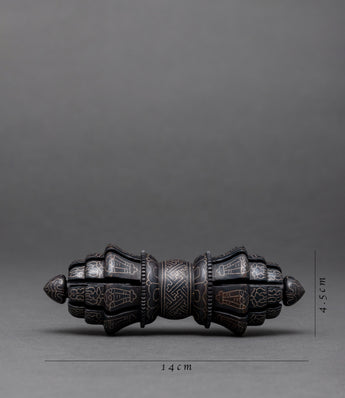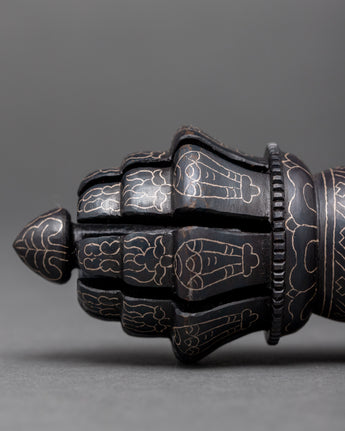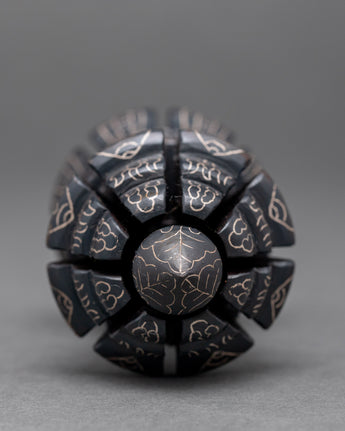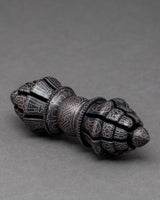





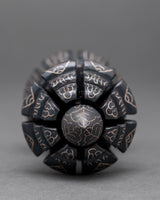



Ritual Vajra | Buddhist Home Decor

100% AUTHENTIC

HANDMADE

FREE SHIPPING
Ritual Vajra
About Our Ritual Vajra :
The vajra is made up of several parts. In the center is a sphere representing Sunyata, the primordial nature of the universe, the underlying unity of all things. Emerging from the sphere are two eight-petaled lotus flowers. One represents the phenomenal world (or, in Buddhist terms, Samsara), and the other represents the noumenal world (Nirvana). This is one of the fundamental dichotomies which are perceived by the unenlightened. The physical manifestation of the vajra, also called Dorje in this context, is the male organ.
The five-pronged vajra (with four Makara plus a central prong) is the most commonly seen vajra. There is an elaborate correspondence system between the five elements of the noumenal vajra and the phenomenal side. One important correspondence is between the five "poisons" with the five pearls of wisdom. The five poisons are the mental states that obscure the original purity of a being's mind, while the five pearls of wisdom are the five most important aspects of the enlightened mind. Each of the five pearls of wisdom is also associated with a Buddha figure. (see also Five Wisdom Buddhas)
Introduction to Vajra :
An instrument symbolizing vajra is also extensively used in tantra rituals. It consists of a spherical central section, with two symmetrical sets of five prongs, which arc out from lotus blooms on either side of the sphere and come to a point at two points equidistant from the center, thus giving it the appearance of a "diamond scepter," which is how the term is sometimes translated.
------------------------------------------------------------------
Size: 4.5 cm(Height) and 114 cm(Base)
Weight: 0.720kg
------------------------------------------------------------------
How to set up your own Buddhist Shrine?
-Find a clean, quiet, and uncluttered spot.
-Set up an altar table, and cover it with an altar cloth that calls to you.
-Place your sacred item (statue, thangka, or a picture of Buddha) at the center.
Shipping & Returns
Row content
Compatibility
Row content


